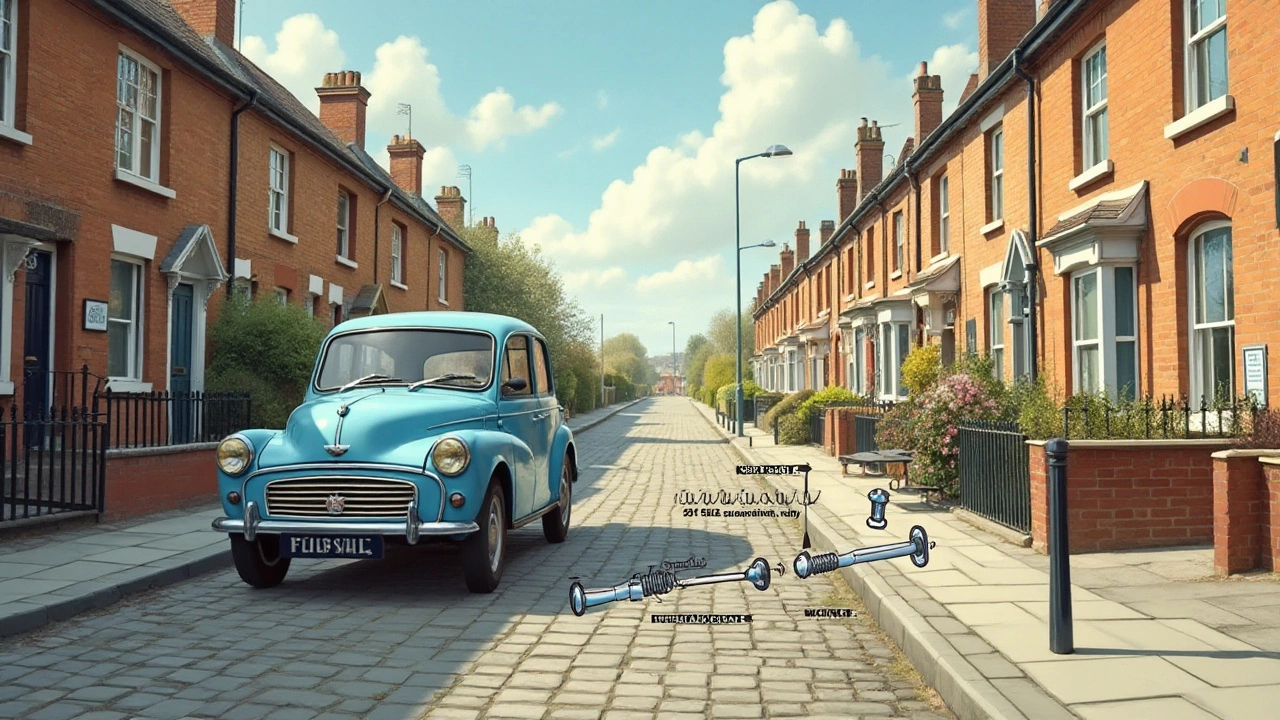Bad Suspension Noise – Identify, Diagnose, Fix
When dealing with Bad Suspension Noise, any rattling, clunking, or squeaking that comes from a vehicle's suspension system. Also known as suspension rattles, it usually signals that something in the suspension components, the parts that connect the wheels to the car’s frame and absorb road impacts is wearing out or mis‑aligned. This kind of noise isn’t just annoying – it can affect handling, increase tire wear, and even lead to unsafe conditions if ignored.
Common Sources of Bad Suspension Noise
The first place most drivers should look is the shock absorber, the hydraulic device that dampens spring movement and keeps the car stable over bumps. A worn shock absorber often produces a thudding or clunking sound when you hit a pothole. Alongside that, improper wheel alignment, the adjustment of the wheel angles to meet factory specifications can cause uneven tire wear and a persistent squeak during turns. Both of these issues are directly linked to bad suspension noise because they alter how forces travel through the suspension system. If the shocks are out of balance or the wheels aren’t aligned, the stress passes to other parts like ball joints and control arms, creating additional rattles.
Beyond shocks and alignment, other culprits include worn bushings, loose struts, or damaged tie‑rod ends. Each of these parts interacts with the primary suspension components, forming a network where one failure can amplify another’s sound. For example, a loose strut will let the spring bounce too freely, which the shock absorber then struggles to control, leading to a louder clunk. Recognizing these relationships helps you pinpoint the source faster: listen for the noise while turning, braking, or driving over uneven surfaces, then match the symptom to the likely part. Understanding how these elements influence each other not only saves time but also prevents costly repairs down the line.
Now that you know what to listen for and which parts are most likely involved, the next step is a hands‑on inspection. Start by checking for visible leaks around the shocks, then lift the car and shake each wheel to feel for play in the bearings or bushings. If you hear metal‑on‑metal contact, focus on the control arms and tie‑rods. Tightening loose bolts or replacing worn bushings often stops the noise instantly. When the problem persists, a professional alignment check ensures the wheels sit at the correct angles, restoring balance across the suspension. With these steps, you’ll turn that irritating clunk into a quiet, smooth ride.
Below you’ll find a curated list of articles that walk you through each of these areas in detail—from diagnosing specific noises to learning when it’s time to replace a shock absorber or get an alignment. Dive in to get the practical tips you need to silence that bad suspension noise for good.

Detecting Noises from Bad Suspension While Driving
Feb 3 2025 / AutomotiveDriving with a bad suspension can lead to various noises that indicate underlying issues. From clunking sounds to squeaks, these noises help in identifying the problematic components. Understanding these noises can assist drivers in deciding when to seek professional help. Regular maintenance can prevent these issues from becoming severe and ensure a smoother ride.
VIEW MORE